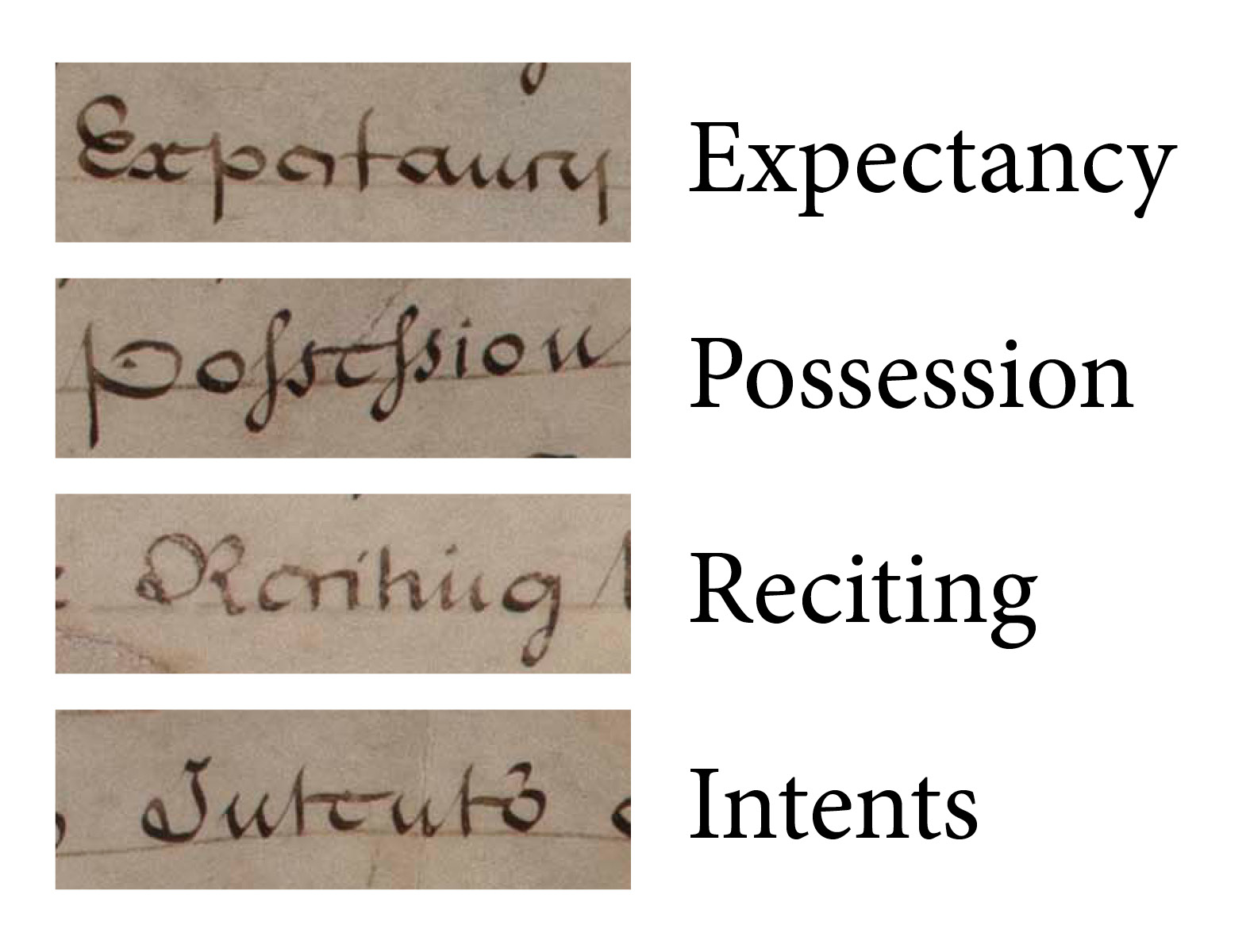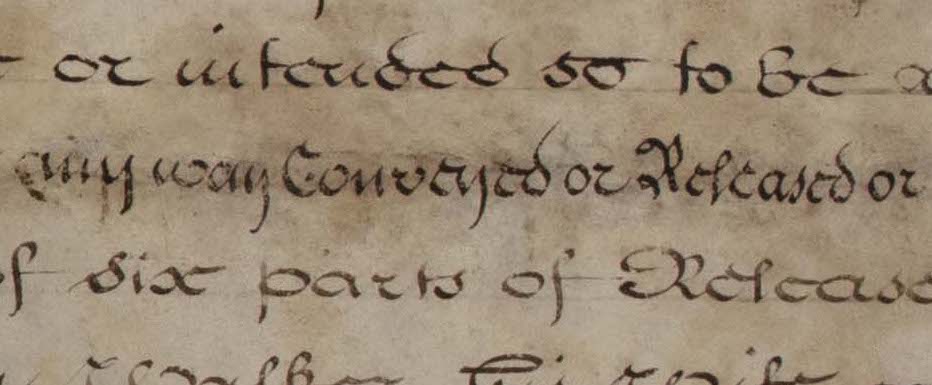Handwriting is a personal passion of mine, despite it having become something of a lost art. Today, when most people think of handwriting at all, it is as a greatly individual method of writing recognizable characters, regardless of the writing system, but in the past, when you could make a living as a scribe, there were highly standardized styles. These styles are often referred to as “hands.” In the case of English, the development of these standard hands occurred at the same time that modern English was evolving, and contributed to regularization of spelling alongside the fixed letterforms in use. Much of this occurred in the Chancery Court, England’s highest civil court, where the massive amounts of paperwork generated there made it a locus for these activities as English replaced (and mixed with) Norman French in royal and government circles.
Readers of our blog, and particularly my series of posts on the Hungerford Deed, will recognize Chancery Court as a big player in the story contained within the Deed. Chancery was where the conflict between our founding donor James Smithson’s mother, Elizabeth Macie, and her sister, Henrietta Maria Walker, was resolved over properties they inherited from their late brother. Chancery Court was infamous for long and drawn-out suits and bloated bureaucracy (see Charles Dickens’s Bleak House as a satirical example).
So, to celebrate National Handwriting Day, here are a few fascinating peeks into the clerical hand in which the Deed was written.
Differences from modern letterforms

Several of these letterforms look very similar, but others leave you scratching your head. Lowercase e often resembles a boxy c, while c itself looks more like our modern r. Some letters look like what we would consider cursive letters (capitals E and L, for example), and some can lack important features (like the crossbar of lowercase t). One of the more famous examples might be the lowercase letter s, which often looks like an f missing its own crossbar—but be careful, because it only looks like an f in certain positions in a word. Check out possession in the above graphic.
Corrections

Deeds like ours were normally written on parchment in ink. If corrections were needed, the surface of the skin could be scraped away, providing a new, blank space to have another try. These can be hard to detect, but here are two clues: first, if you look closely, you can see that the texture of the surface is different because the top layer of the skin has been removed; second, often the correction won’t fit in space available, so the handwriting is more cramped in order to make it fit as best as possible, like in the example, above.
Signal phrases

The Deed’s legal language is broken up into different sections, and each of these have signal words or phrases that start the clauses. These are set off from the main text with a different hand, as are the names of the parties to the Deed when first mentioned. Along with these signal words or phrases, the words “This Indenture Tripartite” (as well as the first word or phrase on every parchment sheet) appear in a heavy blackletter-style hand, along with flourishes, while the names of the parties are in an italic hand. Italic referred originally to a style developed in Italy with a natural forward slant, and this slant has become the primary identifier of a modern italic in word processing. The bulk of the Deed is written in a cursive (“flowing”) hand.
If you’ve found your interest piqued and would like to learn more, you can visit the website of the National Archives of the United Kingdom. There’s an in-depth tutorial using actual documents from their collections, including a letter written by Elizabeth I for any historical royal-watchers out there! And should your passion persist, consider visiting the Smithsonian Transcription Center and have a crack at decoding our field scientists’ notebooks. Happy National Handwriting Day!
Related Resources
- “Palaeography: reading old handwriting 1500 – 1800, A practical online tutorial,” The National Archives UK
- “A Tale of Three Contracts,” by William Bennett, The Bigger Picture, Smithsonian Institution Archives
- “ ‘To Have and to Hold’: Parsing the Legal Framework of the Hungerford Deed,” by William Bennett, The Bigger Picture, Smithsonian Institution Archives
Produced by the Smithsonian Institution Archives. For copyright questions, please see the Terms of Use.

Leave a Comment